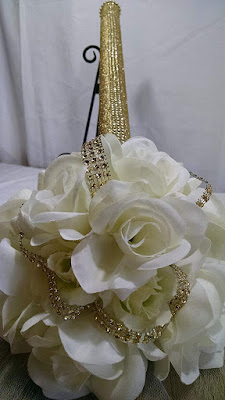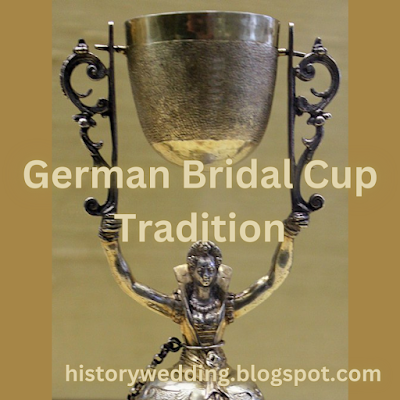(Updated December 2025)
For centuries, the German Bridal Cup has been a powerful symbol of unity, devotion, and good fortune. Couples all over the world still use this charming two-part chalice in their ceremonies or receptions, but the tradition began with a love story that is just as captivating today as it was hundreds of years ago.
Before sharing how the cup works and how you can incorporate it into your wedding, here’s the legend that gave rise to the tradition.
The Legend of the Nürnberg Bridal Cup
Long ago in Nürnberg, Germany, a wealthy nobleman lived with his daughter, the beautiful and strong-willed Mistress Kunigunde. She fell deeply in love with a young goldsmith — a talented, ambitious craftsman with little wealth but a great deal of heart.
Her father, however, had already envisioned a more “suitable” match. One wealthy suitor after another came to ask for her hand, and one after another she refused them, holding firmly to her love for the goldsmith.
Enraged by her defiance, the nobleman ordered the young goldsmith to be thrown into the darkest dungeon in the city. Kunigunde wept endlessly, but her father remained unmoved. As the days passed, her heartbreak began to show; her complexion grew pale, her spirit dimmed, and the nobleman could no longer ignore her grief.
Finally, at his wits’ end, he offered a challenge he believed to be impossible:
"If your goldsmith can create a chalice from which two people can drink at the same time without spilling a drop, I will set him free — and you may marry him."

The Goldsmith’s Masterpiece
Driven by love and hope, the goldsmith poured all his skill into the task. What he created was nothing short of extraordinary:
-
A beautifully sculpted young maiden — her smile said to resemble Kunigunde’s.
-
Her skirt formed a hollow cup.
-
Above her head she held a small, swiveling bucket, crafted so that it moved freely as she was lifted.
The design allowed two people to drink at once, each from a different cup, without spilling a single drop.
Against all expectations, the goldsmith triumphed. The nobleman kept his word, the young couple married, and they were said to have toasted their union with the ingenious chalice now celebrated as the German Bridal Cup.
The Bridal Cup as a Modern Wedding Tradition
Today, the Bridal Cup remains a cherished symbol of:
-
Love
-
Good luck
-
Faithfulness
-
Unity between partners
Using it during your wedding adds a touch of Old-World romance and often becomes one of the most memorable moments of the celebration. Couples typically drink simultaneously, one from the skirt cup and one from the smaller bucket cup, making for a wonderful photo opportunity and a delightful shared laugh.
Handcrafted bridal cups are still made today, often by artisans who honor the traditional Nürnberg design. They make beautiful keepsakes and can be displayed proudly long after the wedding day.
Tips for Using the German Bridal Cup
Drinking from a Bridal Cup does take a bit of practice! Consider:
-
Doing a quick test-run before the ceremony or reception
-
Letting your officiant explain the tradition to your guests
-
Having your photographer ready — the moment is always camera-worthy
If you love the idea of incorporating a meaningful drinking vessel but want something slightly easier to manage, the Scottish quaich is a lovely alternative. It also carries a rich history and symbolizes hospitality, friendship, and unity.
***
Some links in this post are affiliate links. We are a participant in the Amazon Services LLC Associates Program, an affiliate advertising program designed to provide a means for us to earn fees by linking to amazon.com and affiliate sites.
























